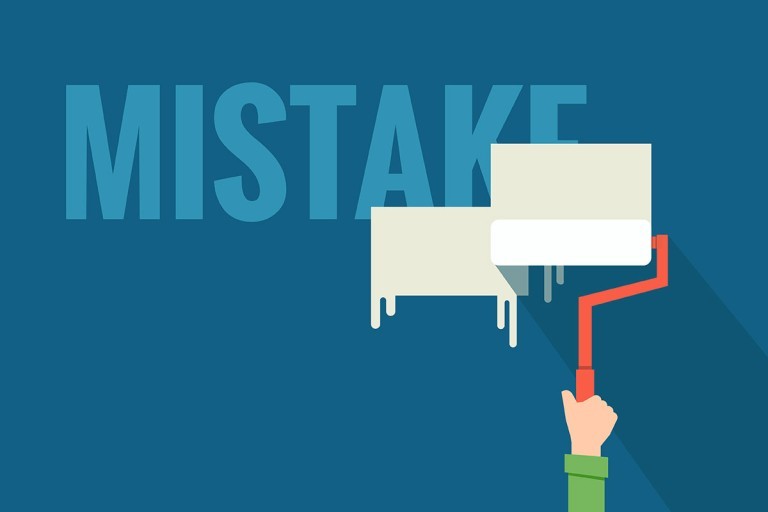4 Common HR Business Mistakes to Avoid in 2015
- Human Resources
- Article
-
6 min. Read
-
Last Updated: 03/03/2015

Table of Contents
In business, especially in HR, making mistakes can have heavy consequences. In 2015, look to save yourself time, money, and headaches by avoiding these common mistakes.
1. Inconsistent Documentation Practices
When trying to bring in revenue or deal with customers, it's easy to put off documentation of HR-related issues. Tomorrow can become next week, or may not even happen. When hiring, conducting performance evaluations, or needing to discipline or even terminate employees, documentation can be crucial to protect your business. Lawsuits for wrongful termination will cost far more than an hour writing up a report.
More than having documentation, you also need to ensure your records show standardized processes. It's easy to forget a six-month evaluation, or use a looser hiring process when you need someone fast. But standardization and consistency may help protect your business when faced with unlawful discrimination lawsuits. As your business grows, standardization may also make it easier for newer employees to understand important HR-related processes.
In addition, you need readable and coherent documentation. That written report only you can read? It's time to type it up. Clarity is also important. If someone outside of your business were to read your evaluation, would it make sense? If the answer is no or maybe, it's time to rethink how you report on these processes.
Documentation processes like maintaining hiring records, holding disciplinary conversations, or conducting investigations can be time consuming. But by creating standardized and coherent documentation, you may help protect your business and help you stay focused on serving your customers.
2. Misclassifying Workers
It may be tempting to classify your employees as independent contractors. Less paperwork, less costs, less hassle for you, right? Maybe not. If the IRS decides this is a misclassification, your business could have to pay up to three times more than if they had just classified their employees correctly the first time. Moreover, if the Department of Labor is involved, you could be responsible for demonstrating the individuals were paid in compliance with applicable minimum wage and overtime rules, at both the state and federal level.
To help keep your business safe, ask yourself some of these questions:
- Do you tell your workers when to start their workday and when to end it?
- Do you control the length of your workers’ lunch breaks?
- How does the worker get paid and when? Is there a schedule?
- What type of paperwork did you use when starting this relationship for work? Form I-9?
- What did you promise the worker as far as wages and benefits when the work relationship began?
The more control you have over how and when work is completed, the more likely workers may be determined to be employees and not independent contractors. Reaching out to a specialist in your area to assist with this determination, including legal counsel, can be incredibly helpful to ensure you make a correct classification.
3. Solely Focusing on Hiring, not Retaining Workers
You've probably heard that loyal customers bring in more revenue than new customers. But what are the costs of brand new hires? According to an estimate reported on Entrepreneur.com, the cost of a new hire is close to $4,000.
More than just hiring, losing employees has a cost too. The Harvard Business Report, for instance, found that turnover for Sam's Club costs $5,274 per employee. Annually, that adds up to $612 million. While Sam's Club isn't a small business, high turnover rates can be a huge cost in terms of knowledge and money, no matter your business's size.
One way you can encourage retention is implementing “stay interviews.” While exit interviews are reactive and designed to help employers understand why an employee is leaving, a stay interview reaches out to ensure employee's problems are resolved before they ever resign. A stay interview can be a great tool for uncovering why employees may want to leave and what would make them stay.
So what do companies ask in stay interviews? Some questions used in stay interviews include:
- What are the things that motivate you here at work?
- What might entice you to leave?
- What do you think about your team or your department?
- Do you feel recognized for the work you do here?
- What would you consider meaningful recognition?
For effective stay interviews, it's crucial to have a sense of trust in the interviewer. Whether with a supervisor or a colleague, employees need to know they can be candid about issues they're having or seeing in your company. Then following through to address these concerns is crucial. Action on these issues shows employees you’re serious about making changes to improve the work environment.
If employees feel like their honesty could be taken negatively, they won't be honest in the interview. If you don't follow through to work on these issues, the stay interview will only appear as a lip service, and perhaps only lead to more turnover.
Effective stay interviews can help build a sense of trust, and help boost engagement. Not only can you see a lower turnover rate, but also happier and more productive employees.
4. Failure to Update Your Employee Handbook
When was the last time you updated your employee handbook? If the answer is more than 12 months, it’s probably time to update it. An outdated handbook, for any size business, can mislead employees about company policies and what’s expected from them. From dress code to communications, your handbook should be clear about your company’s policies.
More than your own expectations, your employee handbook must stay current with applicable laws and regulations. Be sure that the policies in your handbook comply with requirements set forth in federal laws such as the Fair Labor Standards Act (FLSA), Title VII of the 1964 Civil Rights Act, and the Americans with Disabilities Act (ADA). Your policies should reflect a commitment to comply with all applicable local, state, and federal requirements.
Taking time to review your handbook at the beginning of each year can help ensure your handbook stays current, and employees continue to understand what is expected from them.
Conclusion
2015 is here. You can avoid mistakes made by thousands of other businesses — and potentially save your business hours of unnecessary work, and possible issues. Avoiding these mistakes can help you ensure a more productive and happier workforce, and in turn, a more effective business. You can reap these benefits through 2015 and beyond.
Tags







